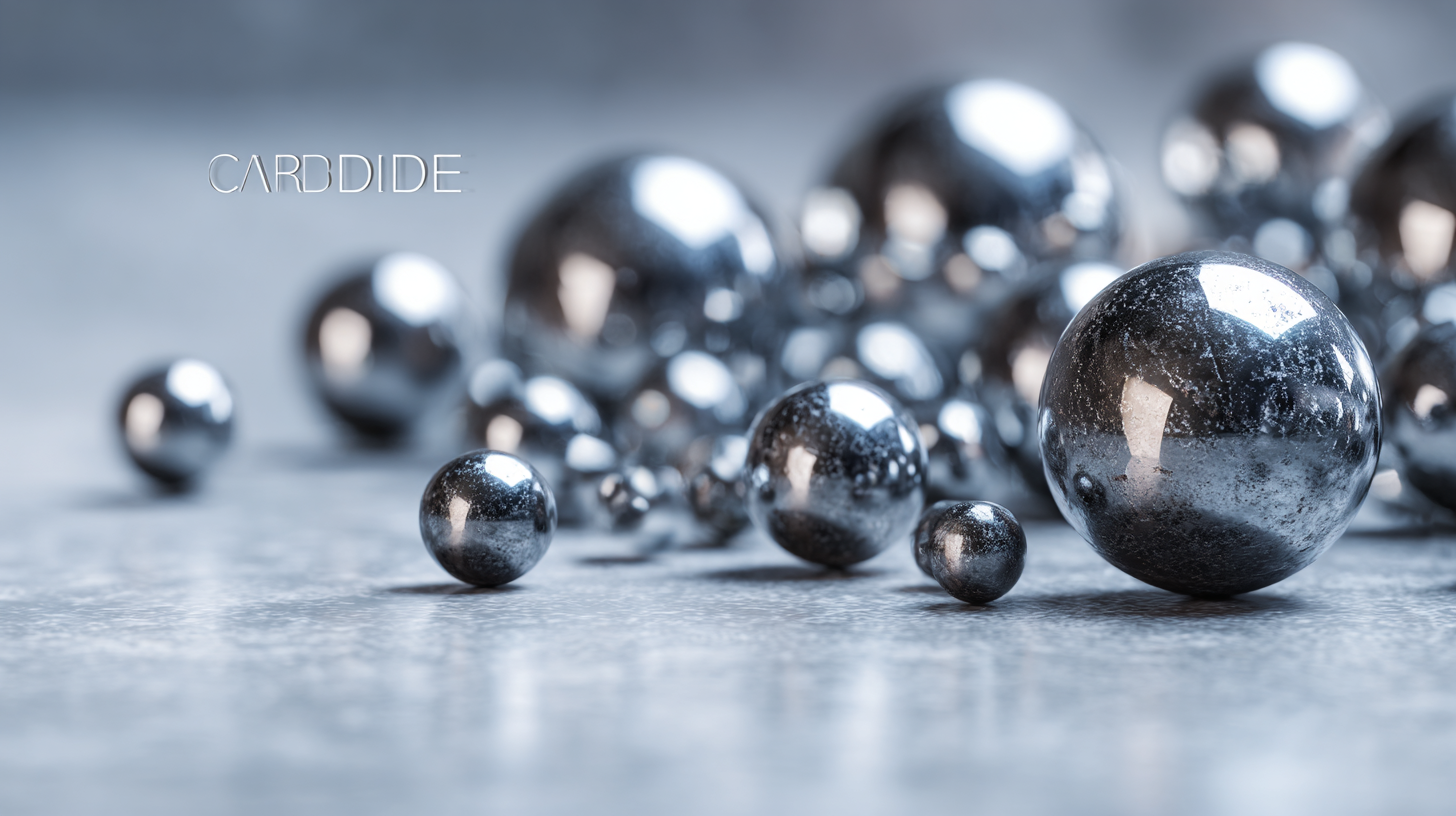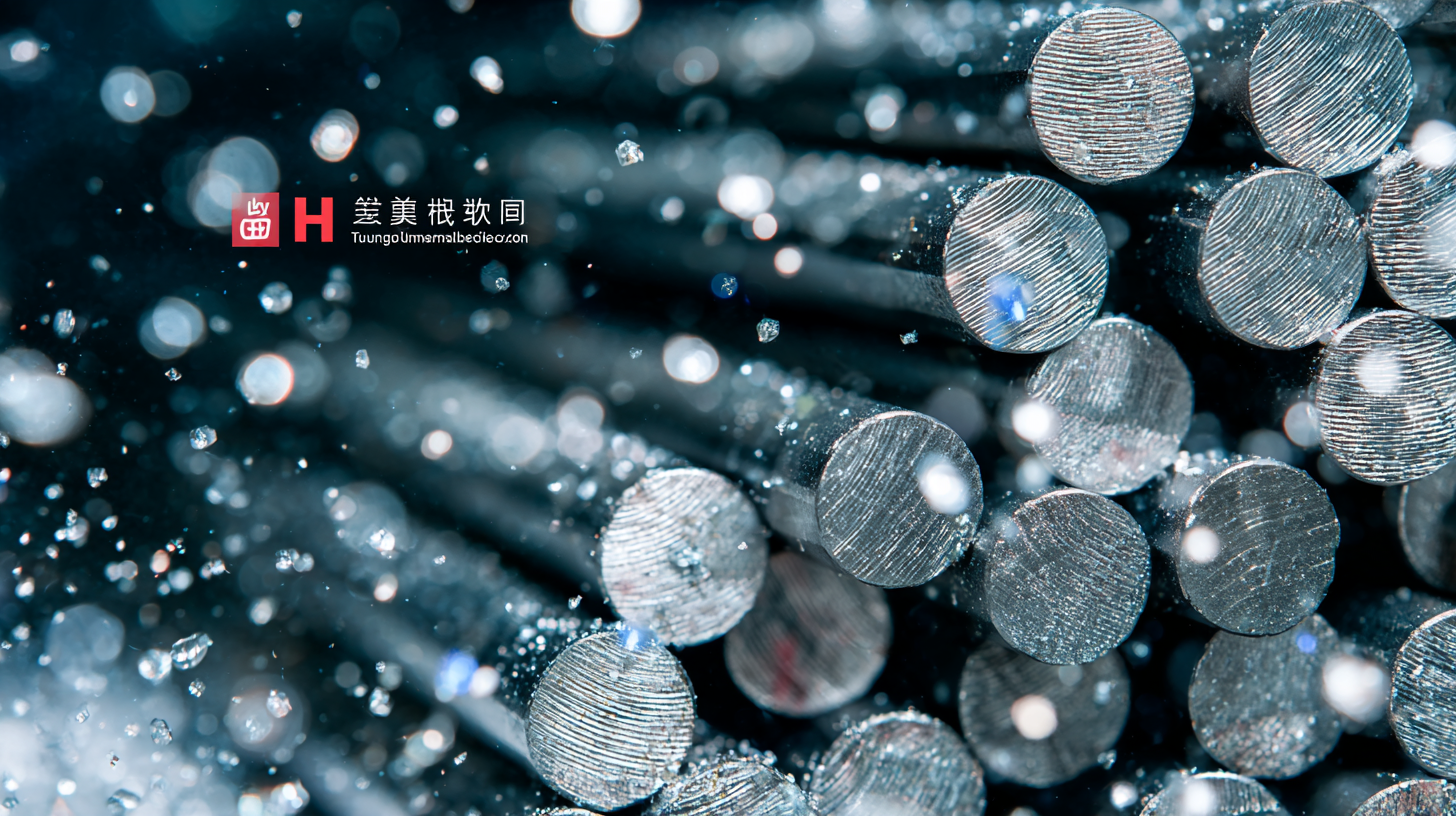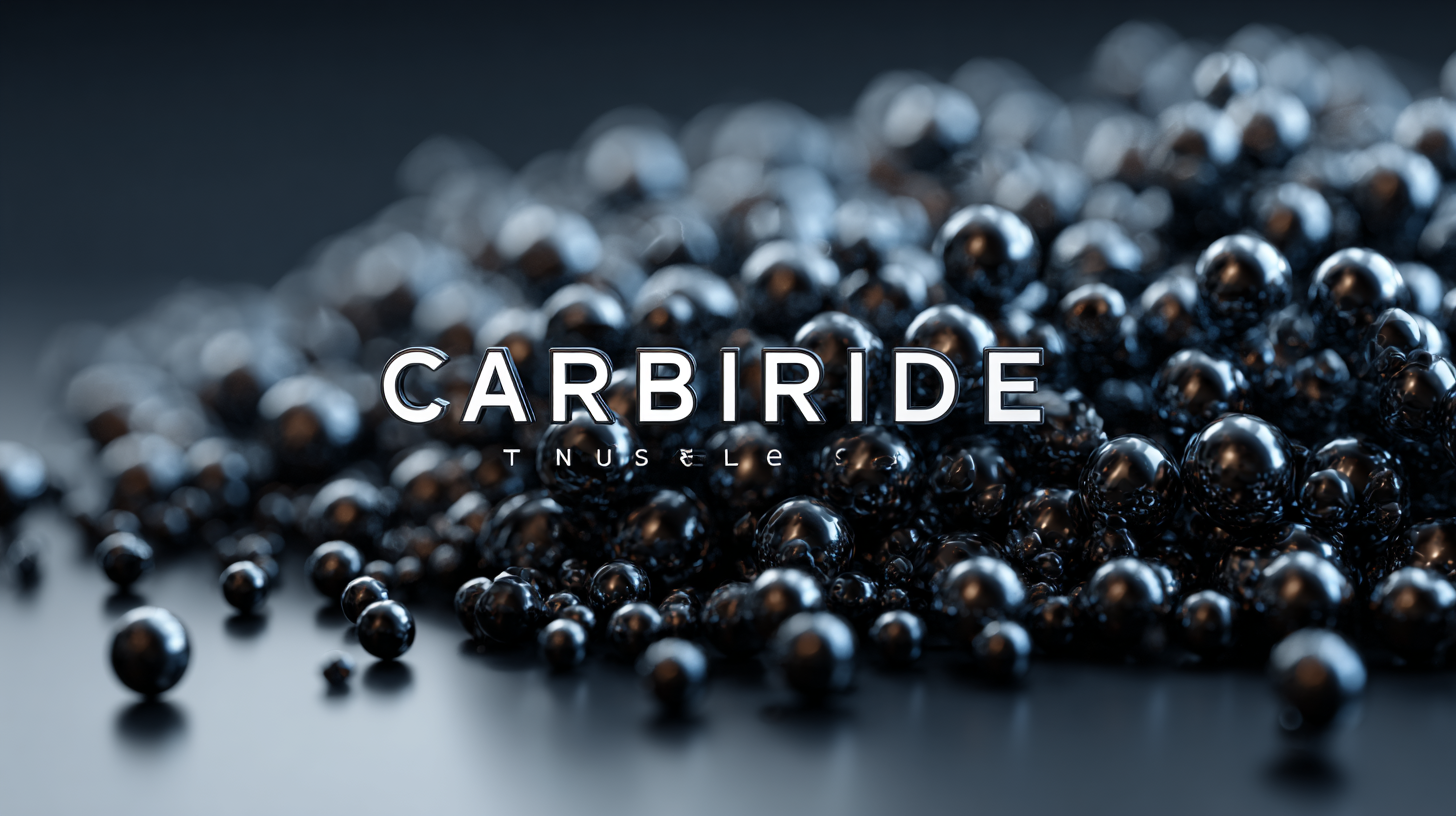Leave your message now to get your free sample and discount price
Leave your message now to get your free sample and discount price
The demand for advanced materials in various industries continues to grow, and Tungsten Carbide Alloy stands out as a leading choice due to its exceptional hardness, wear resistance, and ability to withstand high temperatures. According to a recent industry report by MarketsandMarkets, the global tungsten carbide market is expected to reach USD 36.97 billion by 2025, growing at a CAGR of 6.2% from 2020. This growth is driven by the increasing use of Tungsten Carbide Alloy in sectors such as mining, manufacturing, and construction, where durability and performance are paramount.

As we look towards the future, understanding the evolving trends in Tungsten Carbide Alloy development will be crucial for industries aiming to enhance operational efficiency and sustainability. This blog will explore pivotal advancements and innovations anticipated in 2025, ensuring stakeholders are equipped with the knowledge necessary to navigate this dynamic landscape.
The future of tungsten carbide alloys is set to be shaped significantly by emerging technologies aimed at enhancing their performance and sustainability. As industries increasingly seek materials that provide both durability and efficiency, developments in 3D printing are revolutionizing the production of tungsten carbide parts. This innovative approach not only increases the lifespan of the components—reportedly up to 20 times longer—but also allows for greater design flexibility and reduced material waste. Such advancements are crucial as manufacturers strive to meet the growing demand for high-performance tools and components across various sectors, including aerospace and precision machining.
Moreover, the geopolitical landscape, particularly regarding export restrictions on key metals, underscores the importance of tungsten and its alloys in major industries. As countries navigate the challenges posed by tariffs and supply chain disruptions, the necessity for reliable and advanced materials becomes paramount. This scenario presents an opportunity for companies to invest in the research and development of tungsten carbide alloys, ensuring they remain at the forefront of industry advancements in 2025 and beyond. With the push for innovative manufacturing techniques and sustainable practices, the tungsten carbide market is poised for significant growth, driven by the expanding applications across modern technologies.
| Trend | Description | Emerging Technologies | Projected Impact |
|---|---|---|---|
| Advanced Coatings | Development of new coatings to enhance wear resistance. | Nano-coating technologies | Increase tool life by up to 30%. |
| Additive Manufacturing | Utilization of 3D printing to create custom tungsten carbide products. | Metal 3D printing techniques | Reduce lead time and costs by 20%. |
| Hybrid Materials | Combining tungsten carbide with other materials for better performance. | Composite material innovations | Enhance hardness and toughness significantly. |
| Sustainability Practices | Focus on sustainable sourcing and recycling of tungsten carbide. | Recycling technologies | Reduce environmental impact and waste by 40%. |
| Smart Manufacturing | Integration of IoT for real-time monitoring of manufacturing processes. | IoT and AI analytics | Improve efficiency and reduce downtime by 25%. |
As the tungsten carbide industry propels into 2025, key players are rolling out innovative solutions to meet the growing demands for durability and efficiency in various applications, from cutting tools to wear-resistant surfaces. Major industry players like Kennametal and Sandvik have been at the forefront of research and development, focusing on enhancing the wear resistance and hardness of tungsten carbide alloys. According to a recent market analysis by Grand View Research, the global tungsten carbide market is expected to reach USD 35 billion by 2025, driven by advancements in manufacturing technologies and increasing demand in sectors like aerospace and automotive.

Another noteworthy trend is the integration of advanced manufacturing techniques such as additive manufacturing and powder metallurgy, which are being employed by companies like KMT Waterjet Systems and Carolina Precision Manufacturing to create more complex and durable tungsten carbide structures. Reports suggest that the utilization of these techniques could lead to cost efficiencies of up to 20%, while also reducing material waste. Innovations in cobalt-free tungsten carbide composites are also emerging, aiming to replace traditional binders with more environmentally friendly alternatives, reflecting the industry's commitment to sustainability. These advancements not only promise enhanced properties but also position the industry toward a more robust and eco-conscious future.
As the demand for more sustainable manufacturing practices continues to rise, the tungsten carbide industry is also pivoting toward greener solutions. Reports indicate that by 2025, around 50% of tungsten carbide products will be produced from recycled materials, significantly reducing the environmental impact of mining and processing virgin tungsten. Innovations in recycling technology, such as closed-loop systems, are expected to enhance the efficiency of reclaiming tungsten from used tools and components.
Tips: Consider sourcing tungsten carbide products from suppliers that prioritize sustainability in their operations. Look for companies that use clean energy sources and implement waste-reduction strategies in their manufacturing processes.
Additionally, advancements in eco-friendly binder materials for tungsten carbide manufacturing are gaining traction. Recent studies have demonstrated that using bio-based binders can reduce the carbon footprint of tungsten carbide products by up to 30%. This shift not only aligns with global sustainability goals but also meets the increasing consumer demand for eco-conscious products.
Tips: When selecting tungsten carbide materials, inquire about the binding agents used by manufacturers. Opt for products that utilize environmentally friendly alternatives to traditional binders, ensuring a lower overall impact on the planet.
When considering the best tungsten carbide alloy for the upcoming industry advancements in 2025, it's crucial to prioritize specific essential features to ensure optimal performance and longevity. The first key aspect to evaluate is the hardness and durability of the alloy. Tungsten carbide is renowned for its exceptional hardness, which makes it ideal for high-wear applications. Look for alloys that have been engineered to withstand extreme conditions, as this will directly impact the lifespan of your tools and components.
Another important feature to consider is the cobalt binder content in the alloy. A higher cobalt percentage often enhances toughness and impact resistance, which is especially beneficial in demanding environments. Additionally, examining the alloy's resistance to corrosion and abrasion can provide further assurance of its reliability in various industrial applications. Opting for a tungsten carbide alloy that incorporates advanced metallurgical techniques will not only elevate performance but also ensure that you remain at the forefront of technological advancements in the industry.
The application of tungsten carbide alloys is poised for significant advancement across various industries, driven by innovation in manufacturing processes and a growing emphasis on sustainability. The recycling of tungsten from carbide scraps has garnered attention, with research indicating that this can substantially reduce waste in the tungsten processing industry. In 2016, a substantial portion of tungsten was utilized in manufacturing components for the aerospace and automotive sectors, reflecting the material's durability and performance capabilities. The latest technologies can treat nearly every type of metal and carbide scrap, promoting a circular economy and minimizing the environmental footprint.
Furthermore, the evolution of additive manufacturing techniques, particularly with pure tungsten, has opened new avenues for its use in cutting-edge applications such as fusion energy. This demand is expected to surge as the fusion power sector seeks advanced materials that can withstand extreme conditions. A recent focus on developing mathematical models for surface roughness in machining processes underscores the need for precision in producing tungsten-based components. With the convergence of recycling and advanced manufacturing technologies, tungsten carbide alloys are set to play a pivotal role in meeting the needs of diverse industries by 2025.

